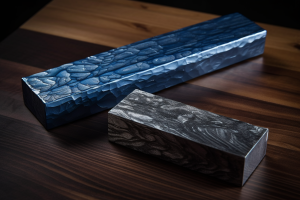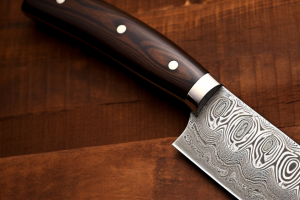
Knife making materials are essential components that determine the quality, performance, and aesthetics of a knife.
From the blade’s metal to the handle’s material and the pins that secure it all together, each element plays a crucial role.
In this blog post, we’ll explore different knife making materials, including handle materials, metal choices, and the importance of pins.
Whether you’re a beginner or an aspiring knife maker, understanding these materials will help you create a knife that suits your needs and style.
Knife Making Materials – Overview
When it comes to crafting a knife, the choice of materials is vital.
The blade’s metal, handle material, and pins are the primary components to consider.
For the blade, high carbon steel and stainless steel are popular choices, each with its own advantages.
Handle materials can vary from natural options like wood and bone to synthetic materials like G-10 and Micarta.
Lastly, pins, such as brass or stainless steel, are crucial for securely attaching the handle scales to the tang.
Let’s dive into each material category in more detail.
Blade Metals

The blade’s metal is one of the most critical aspects of a knife.
High carbon steel, renowned for its sharpness and edge retention, is a popular choice. It can hold a fine edge but requires regular maintenance to prevent rust.
Stainless steel, on the other hand, offers low maintenance due to its rust-resistant properties. While it may be less sharp than high carbon steel, it’s a reliable option for those seeking durability and easy care.
When selecting the blade metal, consider your intended use for the knife and your preference for edge retention versus maintenance requirements.
Common High Carbon Blade Steels:
- 1045
- 1075
- 1084
- 1095
Common Stainless Steel Grades:
- 303 Stainless Steel
- 316 Stainless Steel
Search for 12-inch lengths and more at OnlineMetals.
Handle Materials

The handle material not only affects the knife’s appearance but also its feel and grip.
Wood, such as walnut or birch, is a classic and visually appealing option that provides a warm and comfortable grip.
Bone, while less common, offers a unique aesthetic and can be durable when properly treated.
Synthetic materials like G-10 and Micarta are highly durable, offer excellent grip even when wet, and are available in a wide range of colors and textures.
They are also resistant to temperature changes and chemicals, making them ideal for kitchen knives and outdoor tools.
Pins for Handle Attachment

Pins are used to secure the handle scales to the tang, ensuring a strong and stable connection.
Brass and stainless steel pins are commonly used for their strength and corrosion resistance.
They come in various shapes and sizes, including solid pins and tubular pins.
Brass pins add an attractive contrast to the handle material, while stainless steel pins provide a more modern and sleek look.
When choosing pins, consider the overall design and intended use of your knife.
Find round bar stock in brass and steel for pins:

Search: 12 inches of 1/8″ round 360 brass bar – OnlineMetals

Search: 12 inches of 1/8″ round 1018 Mild Steel – OnlineMetals
Conclusion – The Right Knife Making Materials
Crafting your own knife is an exciting endeavor, and selecting the right materials is crucial to its success.
Knife making materials, from the blade metal to the handle material and pins, all contribute to the final product’s performance and aesthetics.
High carbon steel or stainless steel blades offer distinct advantages, while handle materials like wood, bone, or synthetic options provide different looks and grips.
By carefully choosing these materials, you can create a knife that not only functions well but also reflects your personal style and preferences.
Happy knife making!